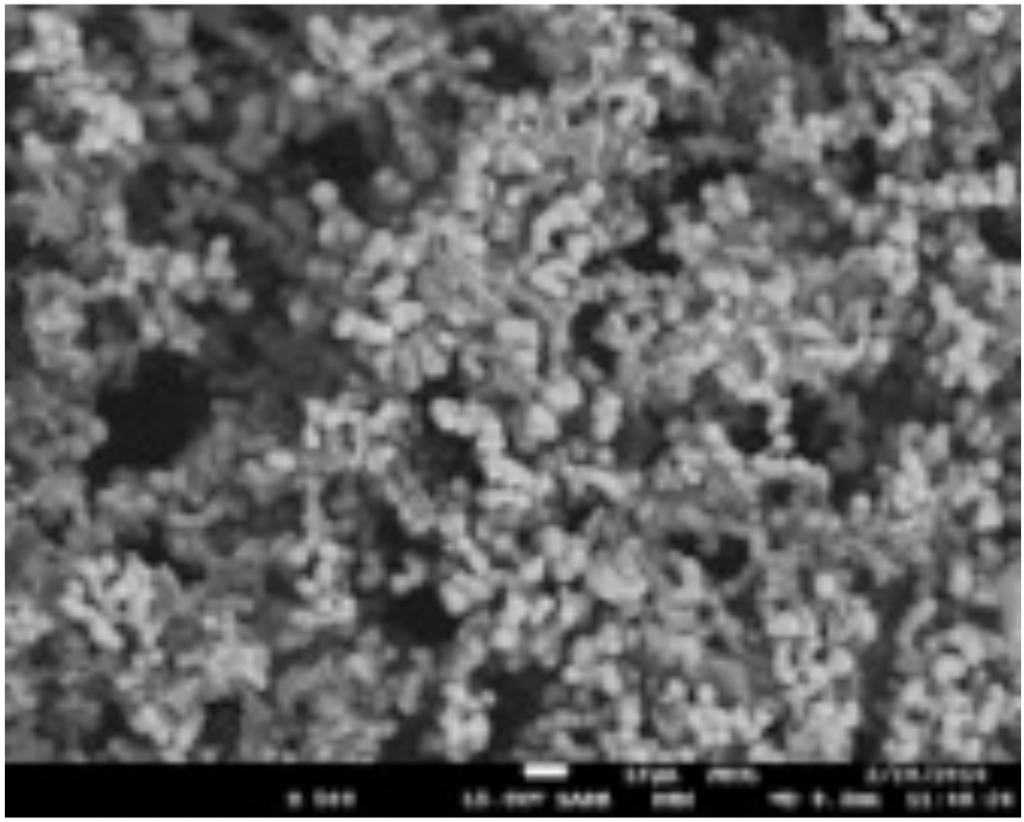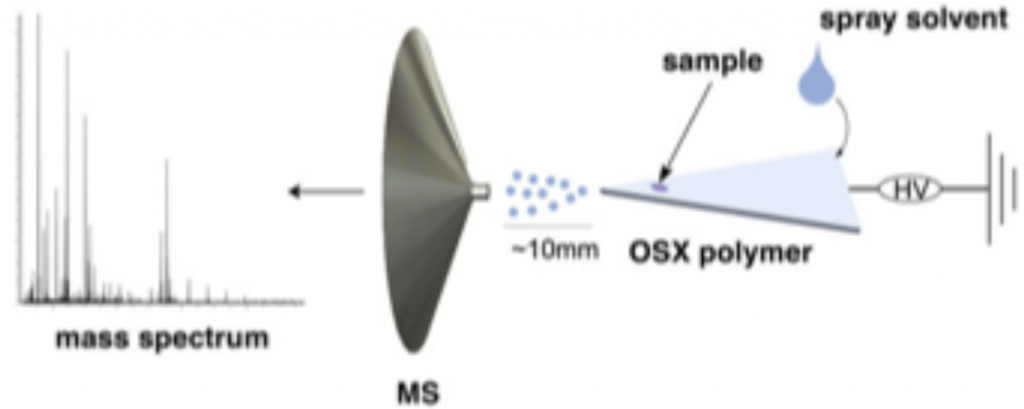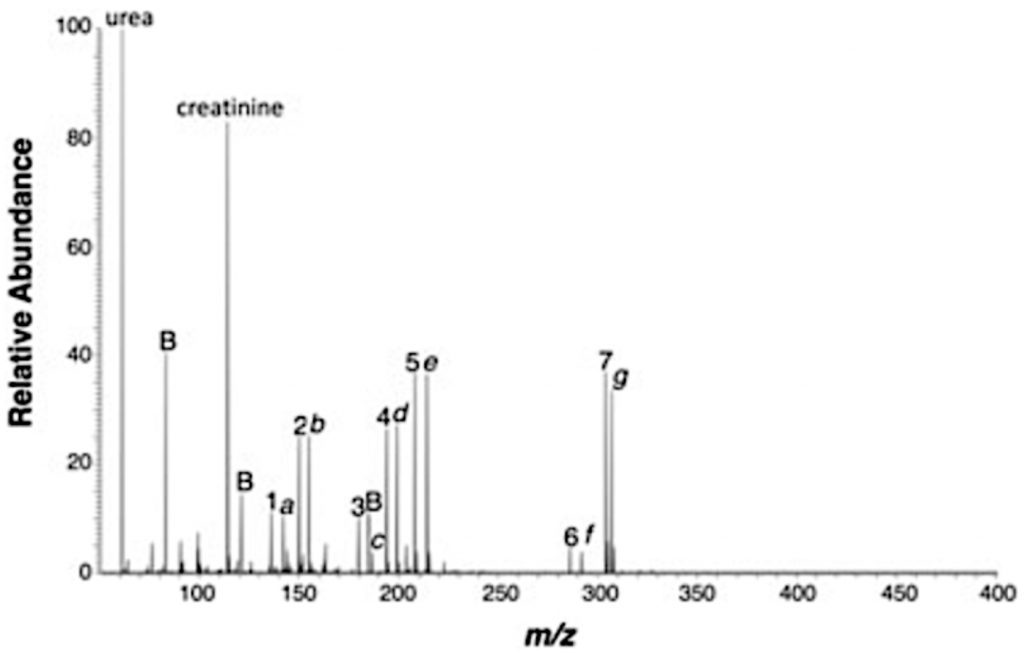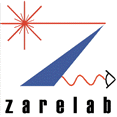Composite Silane-Based Polymers as Substrate Material and Electrospray Emitter for Ambient Ionization Mass Spectrometry
Maria T. Dulay
Two of the advantages of using these organic silane-based polymers, called organosiloxane (OSX) polymers, in the analysis of biological mixtures, such as blood or serum, that significantly simplifies analysis are (1) the low reliance on sample preparation protocols and (2) their use with analytical techniques such as mass spectrometry under ambient conditions (i.e., avoids the use of vacuum). The ability to directly analyze a complex mixture without the need for sample workup allows for high sample throughput analysis.

Scanning electron microscope image of a porous OSX polymer.
Sol-gel chemistry is used to synthesize OSX polymers of high mechanical strength, flexibility, variable porosity, and polarity. Bonding or grafting of various chemical entities, such as enzymes, to the surface of these polymers is possible through the active chemical functional groups on the polymer surface. Because these OSX polymers are amenable to various formats, such as planar sheets, bulk porous materials and coatings for various surfaces and materials, they are potentially useful in areas ranging from medicine to drug and environmental monitoring. As such, utilizing the unique properties of these OSX polymers has been a key goal in its development as a platform for rapid detection of analytes, such as drugs and proteins in biological fluids.
For one platform, porous and nonporous OSX polymers are being developed as deposition and spray surfaces in ambient ionization mass spectrometry (MS, Figure 1) for the analysis of a variety of compounds, including drugs, in complex biological media, such as urine, blood, and serum as shown in Figure 2.1 There is very little to no sample preparation required. Blood spotted onto the polymer is directly analyzed by ambient ionization mass spectrometry with good signal sensitivity.

Figure 1. OSX as a spray material for ambient ionization MS.
Other platforms that involve preconcentration and chromatographic separation using these OSX polymers are being investigated. Furthermore, by incorporating other materials, such as enzymes and conductive compound into the OSX polymers we can extend their utility as materials for bioanalysis. We have recently, modified the surface of OSX polymers with the enzyme, trypsin, for an in-situ digestion device coupled to desorption electrospray ionization MS (DESI-MS) for the direct analysis of digestion products with little sample preparation prior

Figure 2. MS of 7 narcotic drugs and their deuterated analogs in urine detected by polymer spray. The drugs include morphine (6) and cocaine (7).
to the digestion reaction. Currently, we are developing silane-based polymers with higher conductivities by incorporating conductive materials like carbon nanotubes (CNTs) within the network of the polymer. With these OSX polymer-CNT blends, we hope to one day electrically drive these polymers with a conventional battery as the external voltage source. In summary, this project involves both synthetic as well as analytical endeavors toward the realization of composite organic polymer platforms for rapid analysis of a variety of analytes.
1. Dulay, M.T.; Zare, R.N., Rapid Commun. Mass Spectrom. 2017, 31, 1651-1658.
